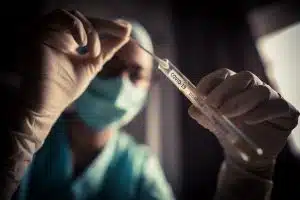
Travelling these days will not only require you to take an HPV PCR test but will also need you to follow various guidelines, such as wearing a face cover. There are different types of face masks available on the market. Most of them have high usability. However, a few from off-brands may not be useful. This article will discuss different types of face covers and how they make a difference in the defence against Covid-19.
Types of Covers
Clinical PPE
To begin with, this is generally known as a surgical or HPV treatment cover. It is usually a medical device that covers the mouth, chin, and nose area. It creates an obstacle that restricts the movement of the infective agent between the hospital crew and the patient. They are mostly used by healthcare staff. It helps them avoid the tiny droplets and splashes from the individuals they treat. This is from the wearer, which helps reduce and handle the source multiplication of huge respiratory droplets through the person putting on this.
Non-medical
These include many forms of HPV with self-made or professional masks, face protectors made from cloth, and some made of other fabrics or materials like paper. They are certainly not standard and aren’t suitable for use in healthcare settings. Healthcare professionals should not use them for protection.
In the following there are several arguments that favour the use of this:
- Covid-19 is increasing day by day. People with mild signs can improve it. Proper face covering can control their multiplication. Similarly, face covers are important to keep the virus droplets away.
- We suggest wearing a face shield right at the start of the symptoms. It is also recommended to use it for 7-8 days.
- We see that the countries using PPE controlled the speed of the virus. Covering the face decreased its multiplication.
- It is easy to manufacture non-medical protections. They’re machine washable and reusable.
However,
- Surgical face covers are a shortage. In this crisis, healthcare staff faced issues.
- It is still not sure that non-medical protections are useful.
- People with face coverings feel a false sense of security. They also relax at a physical distance and touch their faces repeatedly.
- People do not put on or remove these carefully; You must avoid touching the face when doing this.
- Children can not tolerate face masks. People with respiratory disease cannot take it either.
- No one knows whether non-medical equipment is for personal protection or a source of control.
Conclusion
PPE makes a significant difference in the prevention of Covid-19. However, care should be taken to use them appropriately. Therefore,
- Firstly, the authorities should provide medical coverage to frontline workers conducting PCR travel testing PPE.
- One should wear the appropriate HPV Test protection while in public. This will minimize the excretion of droplets, keeping people without symptoms safe.
- When going into crowds or closed spaces, wear one. Do not go to shopping centres and grocery shops without protection.
- Ensure you wear it when using public transport.
- Due to the supply issue, use non-medical fabric. We should prioritise the health care staff and only release it to them.
- In most places, the use of these is compulsory.
- Lastly, educational campaigns should guide the appropriate use of HPV masks.
